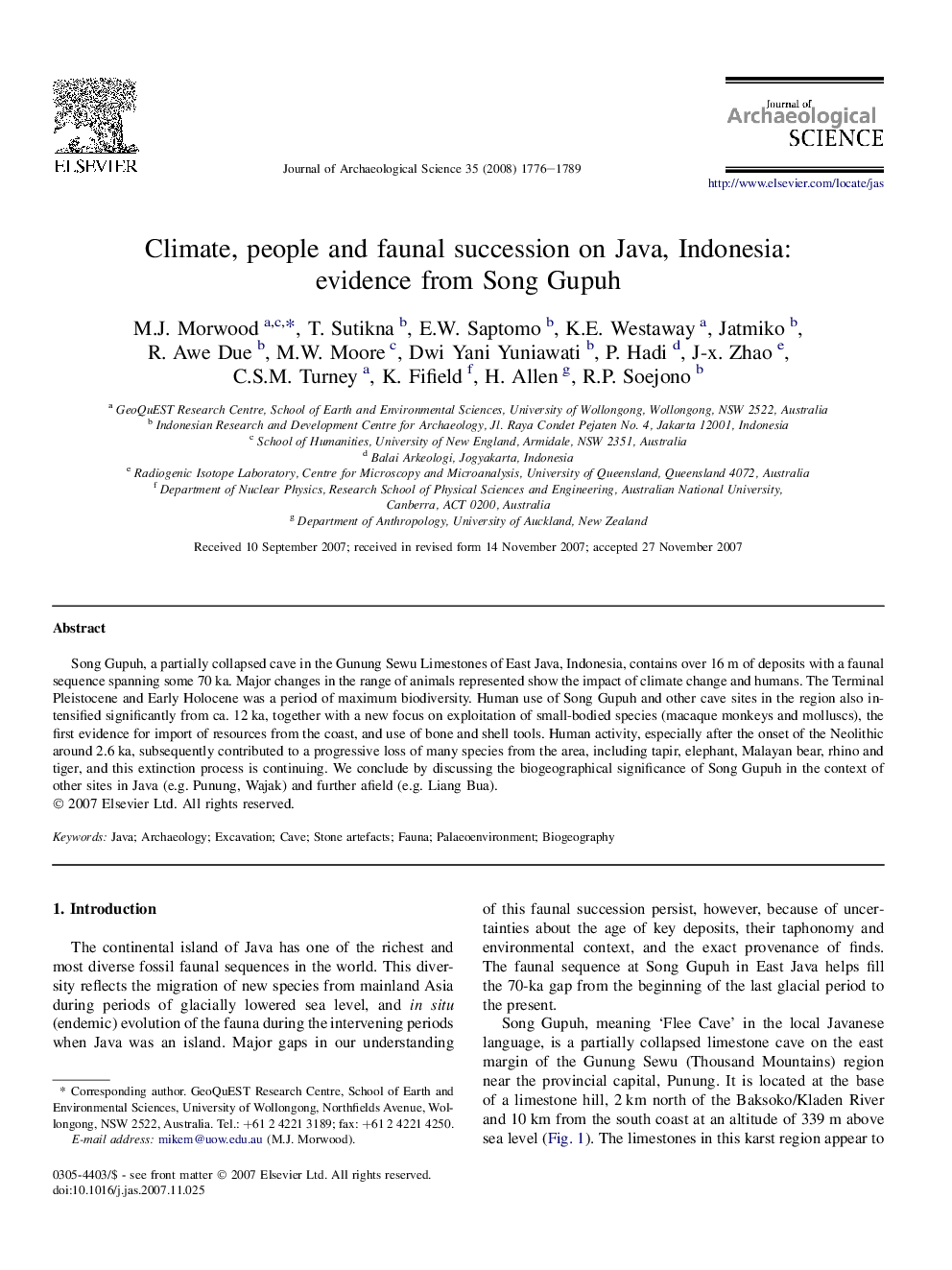| کد مقاله | کد نشریه | سال انتشار | مقاله انگلیسی | نسخه تمام متن |
|---|---|---|---|---|
| 1037247 | 943918 | 2008 | 14 صفحه PDF | دانلود رایگان |

Song Gupuh, a partially collapsed cave in the Gunung Sewu Limestones of East Java, Indonesia, contains over 16 m of deposits with a faunal sequence spanning some 70 ka. Major changes in the range of animals represented show the impact of climate change and humans. The Terminal Pleistocene and Early Holocene was a period of maximum biodiversity. Human use of Song Gupuh and other cave sites in the region also intensified significantly from ca. 12 ka, together with a new focus on exploitation of small-bodied species (macaque monkeys and molluscs), the first evidence for import of resources from the coast, and use of bone and shell tools. Human activity, especially after the onset of the Neolithic around 2.6 ka, subsequently contributed to a progressive loss of many species from the area, including tapir, elephant, Malayan bear, rhino and tiger, and this extinction process is continuing. We conclude by discussing the biogeographical significance of Song Gupuh in the context of other sites in Java (e.g. Punung, Wajak) and further afield (e.g. Liang Bua).
Journal: Journal of Archaeological Science - Volume 35, Issue 7, July 2008, Pages 1776–1789